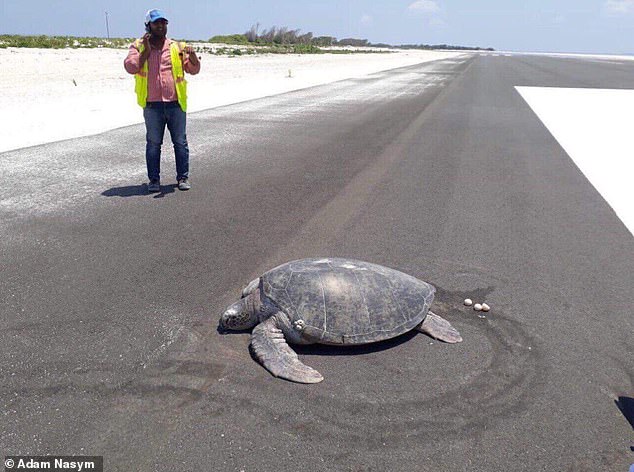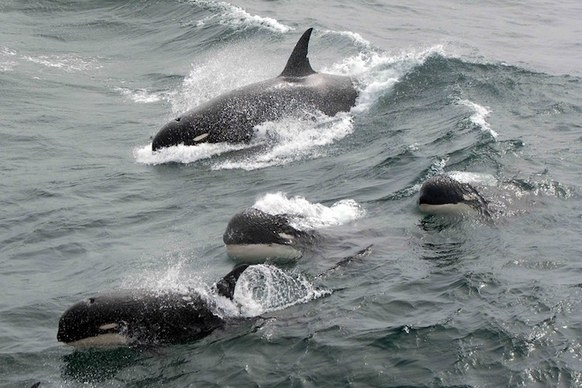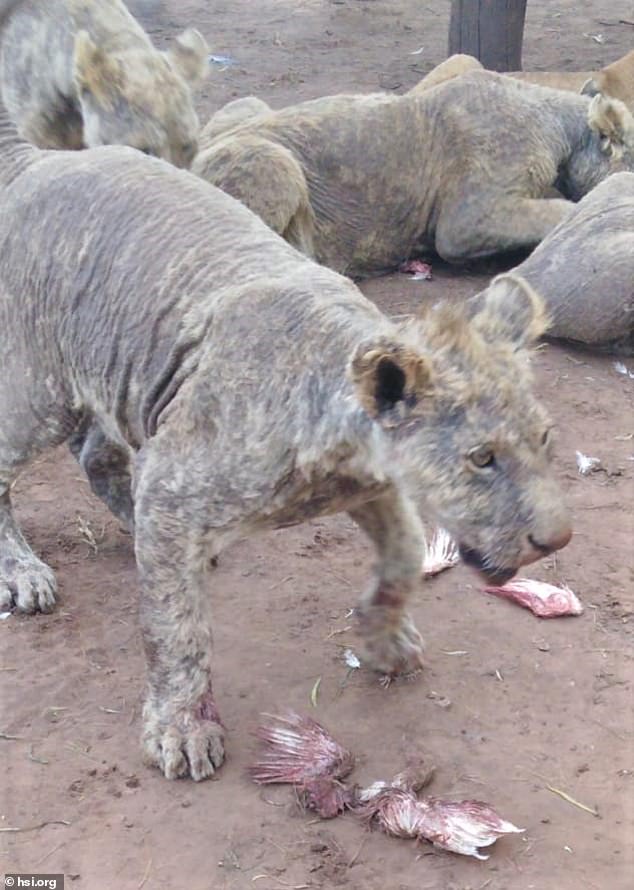
Shocking photos taken from by an anonymous source reveal severely neglected lions covered in mange at a captive breeding facility in South Africa, offering a horrifying insight into an industry that breeds an estimated 12,000 lions on around 200 farms across the country.
Between 6,000 and 8,000 lions are bred in captivity in some 260 facilities across South Africa, marketed to tourists as lion interaction experiences.
Photos of the lions show the animals almost entirely bald due to acute mange and poor, overcrowded living conditions.
Lion breeding farms in South Africa are part of what campaigners call the ‘snuggle scam’ because they supply lion cub petting tourist attractions where visitors from around the world take selfies, oblivious to the suffering behind their holiday photos.
Lion bone trade
Upon investigation of the facility at Pienika Farm, officers at the National Society for the Prevention of Cruelty to Animals discovered 108 neglected lions, as well as caracal, tigers, and leopards living in horrendous conditions.
The South African government sanctions the captive lion breeding industry and has established a quota for the international lion bone trade, despite growing global outrage.
A recent exposé by former Conservative Peer Lord Ashcroft of the United Kingdom highlighted serious non-compliance issues at South African breeding facilities, including alleged illegal ‘green-hunts’.
In so called Green Hunts animals are darted with an immobilising agent as opposed to live ammunition of lions, cross breeding of lions and tigers to produce larger offspring (ligers and tigons), and even plots to illegally export lion skins hidden in deer skin hides.
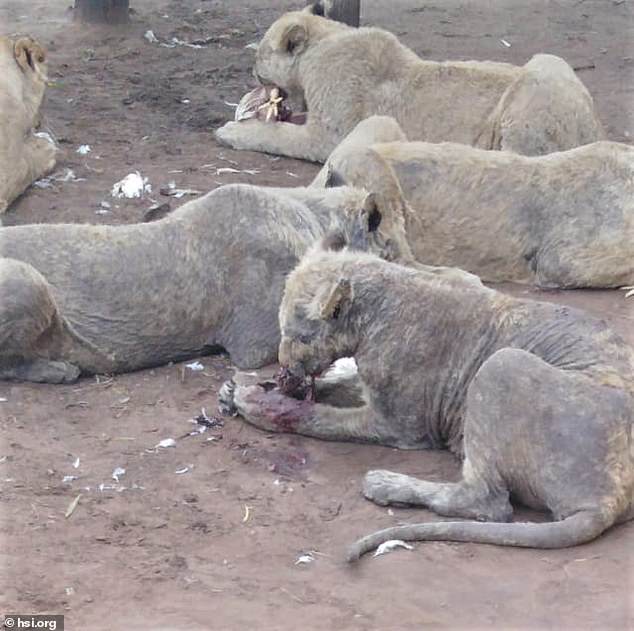
In the wild, lion cubs remain with their mothers for 18 months, and females rest for at least 15-24 months between litters.
Cubs born on breeding farms are taken from their mothers when they are a few days or even hours old to be used as living photo props.
The removal of cubs forces the mother into an exhausting and continuous breeding cycle while incarcerated in enclosures, sometimes without adequate food, hygiene, or the ability to express their natural behaviour.
Audrey Delsink, Wildlife Director at Humane Society International/Africa, said: ‘South Africa’s captive lion breeding industry is a vicious cycle of exploitation, from cradle to grave.
Misled volunteers
‘Lion cubs are ripped from their mothers at just a few days old, to be hand-reared by paying volunteers from countries around the world such as the United Kingdom, who are misled into believing the cubs are orphans.
‘The cubs are exploited their whole lives, first as props by paying tourists looking for selfie shots whilst petting or bottle-feeding the animals, then later as part of ‘walking with lion’ safaris.’
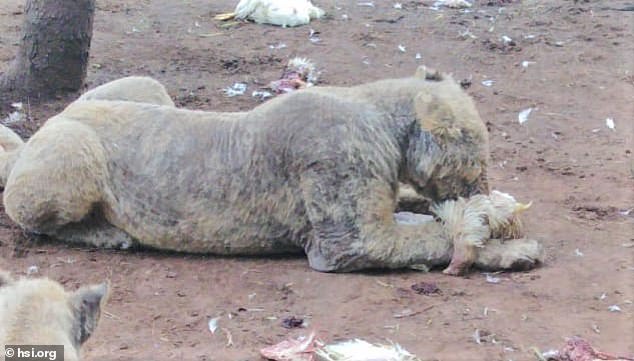
South Africa is a popular tourist destination that welcomed approximately 10.3 million foreign tourists and facilitated 17.2 million domestic tourism trips in 2017, according to the South Africa Tourism Report 2017.
Most tourists unwittingly contribute to the suffering of lions by visiting cub petting or walking with lions tourist attractions.
The NSPCA’s senior inspector Douglas Wolhuter detailed how two lion cubs found at Pienika Farm appeared to be suffering from a neurological condition and were unable to walk.
The cubs were confiscated for assessment and veterinary treatment by a specialist carnivore veterinarian.
Wolhuter stated: ‘Other issues such as small enclosures and inadequate shelter, no provision of water, overcrowding, and filthy and parasitic conditions were noted in the camps that contained the lions, caracals, tigers, and leopards.
‘Twenty-seven of the lions had mange and the caracals were obese and unable to properly groom themselves.’

With fewer than 3,000 wild lions, South Africa has more lions languishing in captivity than in the wild.
The eventual fate of the lions is uncertain and will depend on the outcome of the legal process.
Even if the NSPCA is able to prove that the neglect was so severe as to justify confiscation of all the lions, there are no reputable facilities in South Africa able to immediately take in such a large number of lions.
Audrey Delsink, HSI/Africa Wildlife Director said ‘In the face of so much evidence supporting the significant welfare atrocities and illegal activities, and the bogus standards presented by the industry, the South African government cannot stand idle.
‘We demand that the government shut down this industry once and for all; that is the only way brand South Africa can recover from this significant scourge.’
Source: Dailymail

